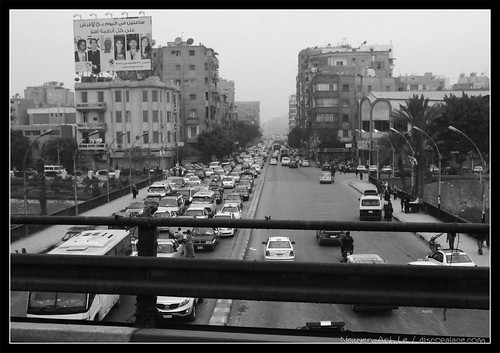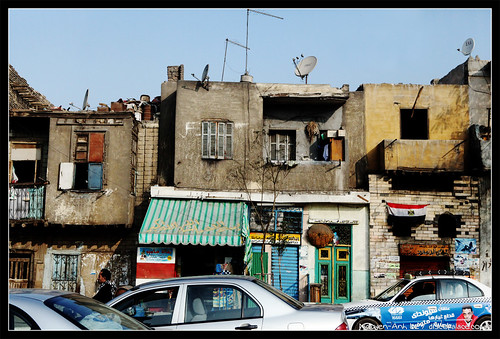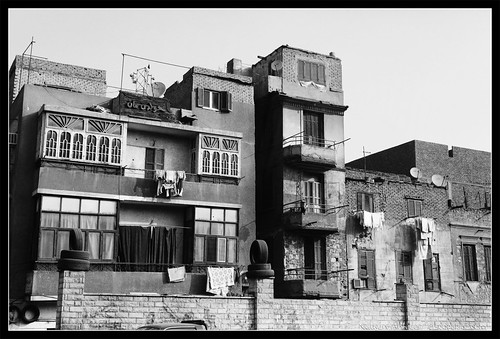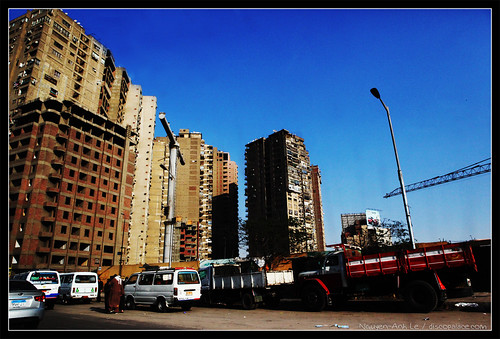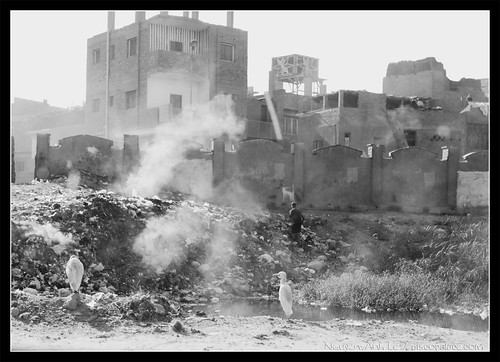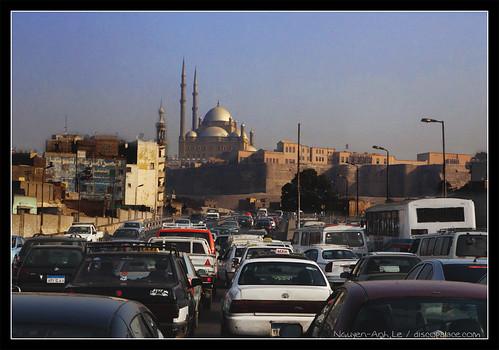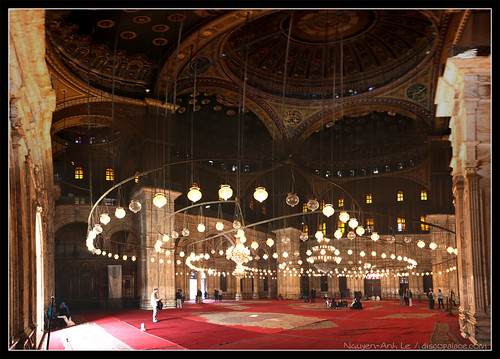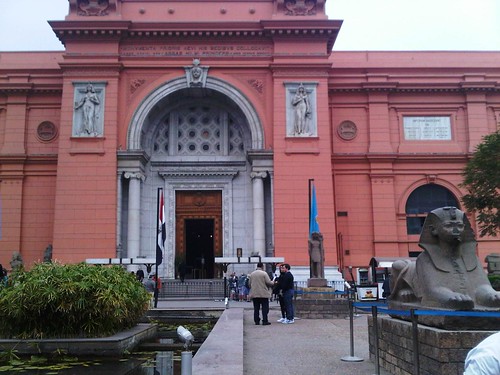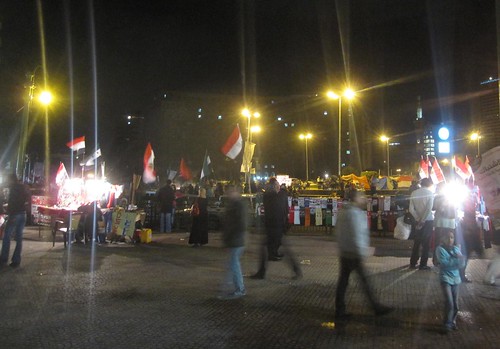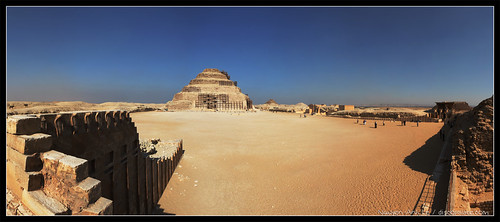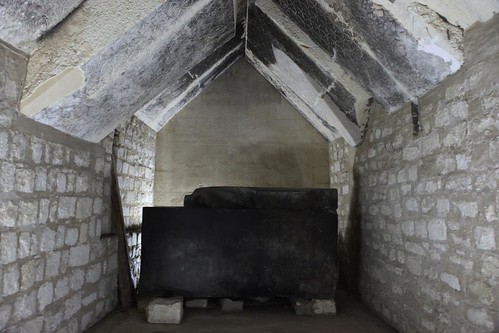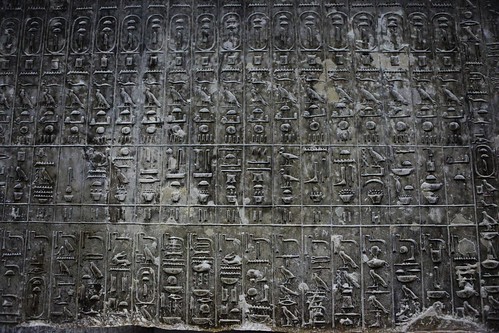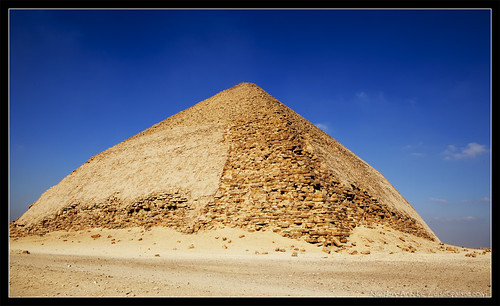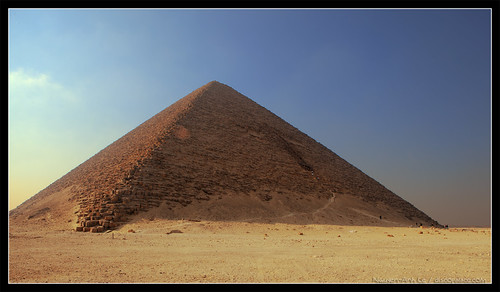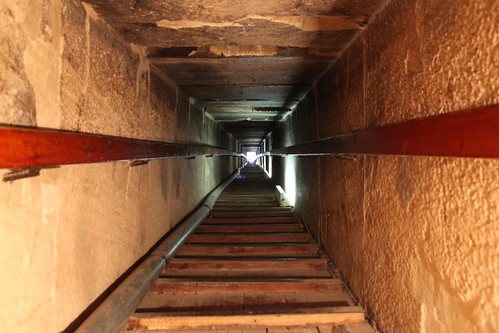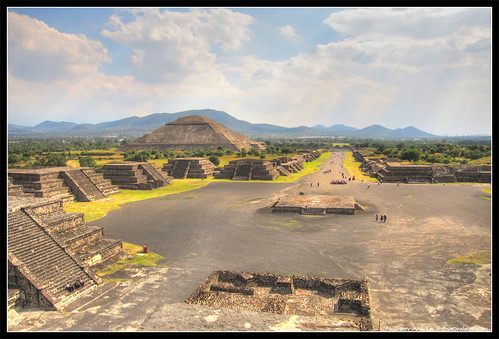Friday, January 20, 2012
Cairo, Egypt
Cairo is Egypt's capital and largest city. With a metropolitan area population of over 15 million, Cairo is around the 15th largest city in the world, the largest in Africa and in the Arab world.
Egypt's geography is very interesting. It resides in Africa, but it is also the link to Asia and the Middle East, via the Isthmus of Suez. Major waterways, such as the Suez Canal and the Nile Delta go through Egypt. Yet most of the land in Egypt is desert - a vast sea of yellow dunes and dust. Almost the entire population of Egypt lives within 5% of its land, the land through which the Nile flows. The Nile's delta region begins near Cairo. You can see the river's influence in Cairo, as high rise buildings, parks, and boats line up along the its banks.
Life in Cairo
Cairo is a busy, crowded city. People are everywhere. Cars are everywhere. The hustle and bustle of city life happens 24 hours a day, seven days a week in Cairo. You can probably find a traffic jam somewhere in the city at any time of the day. We experienced a few ourselves.
In many cities, you can find a few areas in town with beautiful architecture or decoration. In some cities like Paris or Rome, this may be the case anywhere in town. But you won't see any of this beauty in Cairo, even downtown. We're in the developing world, baby. It seems that everyone is just too busy making a living; no time or extra money to beautify the city.
It's no surprise that housing is dense in Cairo. Not as dense as Tokyo, but everything is packed tightly together - from rows of low-rise buildings next to each other, to large high-rise apartments reaching to the sky. The buildings are modest; no fancy materials or decorations - just enough to live in. I noticed that there were tons of buildings under construction. I'm not sure why there is so much, but I guess this a good sign of Egypt's developing economy.
One of the knocks against Cairo is how dirty it is. When you are surrounded by desert, you are bound to get a lost of dust in the air. If you add dust to the emissions of millions of cars on the road (most of which are old and don't have catalytic converters), the air gets a bit ugly. Every morning was a hazy, smoggy morning when I was there.
Unfortunately, the trouble doesn't end with air pollution. Land pollution is just as bad. Poor housing conditions combined with lack of enough sanitation services result in a big mess. Trash can be found everywhere. The canals around town are especially filthy. Oh yeah, don't drink the water. While most of the water is over-chlorinated (i.e., at least it's clean), seeing all the trash everywhere doesn't give you a good feeling. So everyone drinks bottled water. But bottled water results in a lot of plastic bottles contributing to the trash problem.... such a vicious circle...
Despite the poor environment and weak economy, the Egyptian people seem to hold their heads high and look forward with pride. Cairo is a commercial and cultural powerhouse in the region. Let's just say that there's a lot of room for civic improvements :)
At the Bazaar
To get a good feel for the Middle East, you have to visit a bazaar like the ancient Khan el-Khalili Bazaar in Cairo. The bazaars exude a special vibe that is distinctly Middle Eastern. It's neat seeing all the shops packed together, shopkeepers hawking their wares, and customers shopping for goodies. American-style malls are ginormous, impersonal, and corporate-driven. People leave you alone because they don't care if you buy anything. At a bazaar, it's each shopkeeper's livelihood at stake, and they really want your business.
Egyptian commercial culture seems very tied to its bazaars - in particular, bargaining. Bargaining appears to be in the blood of every Egyptian (or perhaps most Middle Eastern people). As one of our tour guides said, "even if he were my brother, I would bargain with him." You have to bargain everywhere in Egypt - at bazaars, at local shops, at tourist attractions, and for taxis. I even had to bargain when buying bottled water. Apparently, it's fair game to attempt to charge you as much as possible for anything. And when you look like a dumb tourist, the prices get more outrageous. One guy tried to sell me a large bottle of water for 10 Egyptian pounds ($1.60 USD). I walked away and found another guy down the street selling it for 5 pounds. I went to yet another place, bargained, and ended up getting the water for 2 pounds (33 cents). At the tourist shops, you need to counter at around 25% of the asking price to get a reasonable deal. Even though I'm Asian, skill and patience with bargaining seem to have left my blood.
Cairo Citadel
Perched on a hill in the middle of Cairo is the Citadel. Built in the 12th Century CE by the great Saladin, the Citadel overlooks the city and protects it from invaders. It features intact city walls and a large complex of buildings, including mosques and museums. You can get a great view of the city from the Citadel. On a clear day (are there any???), I'm told that you can see all the way to the Pyramids at Giza.
Mosques
Although Egypt is a secular country, around 90% of its people are Islamic. The remaining 10% are Coptic Christians, which are closely related to Greek Orthodox. It's an interesting experience being in an Islamic country. You can't escape Islam, especially with the Call to Prayer sounding through loudspeakers, five times a day (including at 5am!).
Cairo features some fantastic Islamic mosques. The one shown above and below is Muhammad Ali Mosque, located within the Cairo Citadel. No, it's not the American boxer. The mosque was built between 1830 and 1848. It's the most recognizable part of the Citadel and is easily seen from far away in the city.
Another mosque located within the Citadel is the Al-Nasir Muhammad Mosque, shown below. It was built in the 14th Century. The architecture of Muhammad Ali Mosque is considered of "foreign" design - it's of Ottoman/Turkish style (the Ottomans ruled Egypt for a while). On the other hand, Al-Nasir Muhammad Mosque is of truly Arabic design.
Downtown Cairo
Downtown Cairo is located near the Nile. One of its major landmarks is the Egyptian Museum. It boasts a vast collection of artifacts from ancient Egypt. Although the museum could use a lot more funding and improvement of its displays, the content is impressive.
The highlight of the museum is the contents of the Pharaoh Tutankhamun's tomb. Tutankhamun was no special ruler. We just know about him because his tomb was the only one that was fully intact when it was discovered (apparently grave robbers missed it). The jewelry, weapons, famous mask, etc. are very cool to see.
Next to the Egyptian Museum is the headquarters of the National Democratic Party of Egypt. Normally, such a building would not be a landmark. But as you can see in the photos, the building burned down. The National Democratic Party had become the single power in Egypt - the party of which ousted leader Hosni Mubarak was the head. On January 25, 2011, the Egyptian revolution began. Protests turned into violence, and as a result, this building was set on fire. There was even a damage to the artifacts in the Egyptian Museum - a shame. Later, Mubarak stepped down, party leaders stepped down, and now the party is defunct.
Speaking of the Egyptian revolution, Tahrir Square (aka Liberation Square) is just down the street. I had never heard of it, until I saw TV footage of the protests and violence from the revolution. At the time, I didn't think I would be setting foot there, less than a year since the revolution began. Even a few weeks before my trip, additional violence flared at the square. Nonetheless, we felt compelled to check it out for ourselves. Viva la revolucion!! :)
Even though Egypt's main attraction is its history, I found a lot of value in experiencing its current events. The Egyptian revolution isn't just limited to Egypt; it was the catalyst for the "Arab Spring" that has erupted in the region - Libya, Tunisia, Syria. Maybe one day, the Middle East will be a more democratic, orderly, and peaceful place. It would be cool to say that I visited there, at the beginning of the new era.
Related links:
Wednesday, January 18, 2012
The Pyramids of Egypt
When you think of Egypt, you almost always think of the Pyramids as well. It's hard to believe the Egyptians built them almost 5000 years ago - way before the existence of the Babylonians, Chinese, Greeks, Persians, and other mighty civilizations. Out of the original seven ancient wonders of the world, the Pyramids are the only ones still standing.
Exactly how many pyramids did the ancient Egyptians build? I knew of the Great Pyramid, and I knew that they built more than one. More than that, I did not know hehehe. Here's a great article by National Geographic that explains the pyramids in detail. Sounds like the Egyptians built eight big ones. Most of them are located on the west bank of the Nile, just southwest of Cairo. I was fortunate enough to visit six of them. I'll write about the pyramids in the order in which they were built.
My G Adventures tour itinerary only included visiting the pyramids at Giza. I visited Saqqara and Dahshur (and Memphis) on my own, before the tour started. I think it was worth it to have seen all these pyramids.
The Step Pyramid at Saqqara
Before pyramids, the ancient Egyptians built mastabas to bury dead Pharaohs. Mastabas are single-story, flat-roofed tombs. I bet they'd looked like dull warehouse buildings like Costco or Home Depot. Around 2600 BCE, however, the Pharoah Djoser somehow got the idea of adding more levels to the tomb. He and his architect buddy Imhotep (ya know, the typical technical genius behind the great leader) worked it out and built the Step Pyramid.
The Step Pyramid is located in Saqqara. It's part of a large temple complex, with a bunch of other tombs. The Step Pyramid is currently being renovated, so I could not enter. However, I was able to enter one of the smaller tombs in the temple complex. These tombs are dark and dreary - only a dead person would want to be inside...
The Bent Pyramid at Dahshur
A few Pharoahs later, it was determined that a step-shaped monument wasn't good enough for a Pharaoh entering the Afterlife. Pharaoh Snefru thus commissioned the building of the first smooth-sided pyramid. What a genius idea!
It seems that building a pyramid for the first time in history was a bit of a challenge. Apparently, the angle of the pyramid was too steep. Perhaps it would have gotten too high to build, or it would have become too unstable, who knows. They reduced the angle halfway through the construction. Whatever the problem was, it was a big Homer Simpson "D'oh!!!!" moment. I would call it an ancient equivalent to the Leaning Tower of Pisa. So instead of calling this pyramid "The Marvelous Pyramid of Snefru," we refer to it as the "Bent Pyramid."
Luckily for Snefru, he was still alive, and the gods weren't too angry at his engineering blunder. As the saying goes, "if you don't succeed, try and try again." Snefru commissioned the building of another pyramid (monument #3 for him), just over the next sand dune in Dahshur. This pyramid, known as the Red Pyramid, is the first true pyramid ever built.
Both pyramids at Dahshur are nice to visit because there aren't nearly as many tourists as Giza. You can easily walk right on in. For the Red Pyramid, you climb steps about halfway up the pyramid. Then you descend down a very low ramp to the base of the pyramid. It's actually a little tiring. The tomb is a dark, tiny little room, about the size of a small bedroom, with an A-shaped ceiling. Unfortunately, my pics of the tomb were too blurry. It kinda looks like the tomb in the Step Pyramid, but more narrow.
The Great Pyramid of Khufu at Giza
The main pyramid attractions are at Giza. The pyramids shown in the photo above are the Great Pyramid, the Pyramid of Khafre, and the Pyramid of Menkaure.
I'm told that Giza is usually packed with tourists. Usually people recommend going very early in the morning, to avoid the crowds. Luckily for us, many tourists were afraid of the protests in Cairo or something. We visited Giza in the afternoon and hardly faced any crowds.
The Pharaoh Khufu, son of Snefru, decided to outclass his father. The commissioned the building of the Great Pyramid. It is the largest pyramid in the world. Unfortunately you can't go inside anymore. But standing in front of this colossal monument is an experience in itself. It was actually hard to get a good photo of the pyramid, because you have to step back so far to fit it all in the frame.
The Pyramid of Khafre
Khafre succeeded his father Khufu as Pharaoh. This pharaoh, however, chose not to outdo his father. He built this pyramid next to the Great Pyramid. Although Khafre's pyramid is shorter, it was built on higher elevation. Thus it actually looks taller than the Great Pyramid. How's that for sneakiness? Khafre probably laughed about it all the way to his grave (pun intended)....
One neat thing about the Pyramid of Khafre is that part of its smooth outer casing - at the top - is still intact. The casing at the bottom has worn away. The entire casing of the Great Pyramid has worn away too.
The Sphinx
Khafre didn't only build a pyramid; he expanded the pyramid complex at Giza. He built courtyards, temples, statues, etc. Most of it has worn away, unfortunately. But one highlight that still stands is the Sphinx. A sphinx is a mythical creature that has the body of a lion and the head of a human. The carving is quite impressive! It's kinda like a 5000-year-old version of Mt. Rushmore... Tourist tip: the Sphinx is great for taking silly photos :)
Conclusion
Pyramids are pretty darn amazing. I can't believe they built these things almost 5000 years ago. What's also amazing is that other civilizations have built great pyramids as well - almost independently of each other. Here's a pic of the pyramids at Teotihuacan, near Mexico City. You can also find pyramids built by the Mayans, Incans, Chinese.... there are pyramids even in Bosnia and Russia! I am convinced that aliens came and designed all of these pyramids around the world....
Related links:
- Egypt & Jordan trip overview
- All articles from this trip (in reverse order)
- Slideshow of photos on Flickr
- Photo album on Flickr
- Egypt photos on Facebook (FB friends only)
- Jordan photos on Facebook (FB friends only)
Tuesday, January 17, 2012
Egypt & Jordan: Trip Overview
Happy new year! I just returned from a fabulous three-week tour of Egypt and Jordan. It was a great feeling to walk around and experience the "Cradle of Civilization" in person. Thousands of years ago, powerful empires ruled and built great monuments here. The great religions of Judaism, Christianity, and Islam arose from this area. I got to get a taste of modern history too, as the world of Middle Eastern politics and the "Arab Spring" unfolds every day.
This trip was a bit different for me because I booked a tour. I usually travel the "do it yourself" way, but a tour of these places made the most sense. The tour operator was G Adventures, a Canadian adventure tour company. I didn't travel with any friends this time, either. Everyone on my 14-person tour group was a stranger to me. Luckily, they all turned out to be great, interesting people. Now they are my new friends! :)
We covered a lot of ground in Egypt and Jordan. We rode buses, overnight trains, 4x4 trucks, sailboats, ferries - also donkeys and camels! You can click on the map above for a link to the tour itinerary.
The trip was a good combination of culture/history, local experience, and hiking outdoors. It's hard to say what my favorite spot was. Each destination was very unique and interesting.
As you probably know, I will have a ton of photos and thoughts to share. I plan to write blog articles on the following topics:
- The Pyramids of Egypt
- Cairo, Egypt
- Aswan (Egypt)
- Luxor (Egypt)
- Mt. Sinai and the Red Sea (Egypt)
- The Rum Valley and the Bedouin People (Jordan)
- Petra (Jordan)
- Biblical Jordan
Subscribe to:
Comments (Atom)


